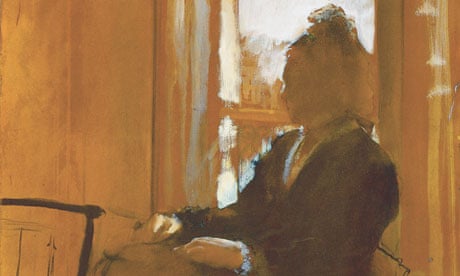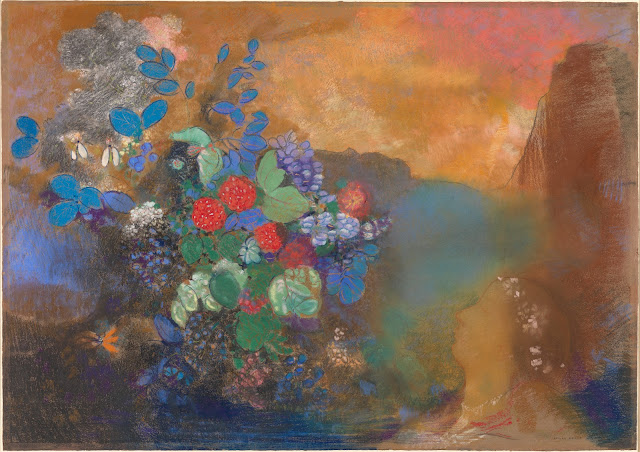Royal Academy of Arts
25 November 2023 - 10 March 2024
The Royal Academy of Arts presents Impressionists on Paper: Degas to Toulouse-Lautrec, an exhibition exploring how Impressionist and Post-Impressionist artists in late 19th-century France radically transformed the status of works on paper. During this period, drawings, pastels, watercolours, temperas and gouaches were increasingly perceived as more than just preparatory techniques, and became autonomous works of art, claiming a shared aesthetic with painting. Featuring around 80 works on paper, by artists including Mary Cassatt, Paul Cézanne, Edgar Degas, Paul Gauguin, Eva Gonzalès, Claude Monet, Berthe Morisot, Odilon Redon, Pierre-Auguste Renoir, Georges Seurat, Henri de Toulouse-Lautrec and Vincent van Gogh, amongst others, the exhibition focuses on this crucial shift in how these works were viewed.
The avant-garde artists known as the Impressionists came to prominence during the late 1860s and early 1870s, first exhibiting in Paris as a group in 1874. They shared a concern to depict scenes from everyday life and to address contemporary issues, which encouraged them to challenge traditional attitudes to drawing and seek innovation. Vivid colour, a quick, loose touch, and daring viewpoints, together with a deliberate lack of finish, were their means of capturing the fugitive effects of nature as well as vignettes of modern life. Moreover, the portability of drawing materials greatly facilitated direct observation and the recording of scenes on the spot.
The eight Impressionist exhibitions, held in Paris between 1874 and 1886, included a large number of works on paper and reflected their shift in status. This was also encouraged by dealers who recognised the economic advantage of exhibiting and selling works on paper.
The exhibition opens with works from the early years of Impressionism (the 1860s and 1870s), including
Degas’ enigmatic Woman at a Window, 1870-71 (The Courtauld, London (Samuel Courtauld Trust)), executed in essence (oil paint diluted with turpentine), and a delicate study in pastel by Gonzalès, entitled The Bride, 1879 (Private collection).
The exhibition continues with an examination of the 1880s, when the Impressionists held their last group exhibition in Paris. Works in this section include van Gogh’s The Fortifications of Paris with Houses, 1887 (The Whitworth, The University of Manchester), combining graphite, chalk, watercolour and gouache, and one of Monet’s luminous landscapes in pastel, Cliffs at Etretat: The Needle Rock and Porte d’Aval, c.1885 (National Galleries of Scotland, Edinburgh).
The exhibition concludes with works from the 1890s and 1900s, which saw an ever-growing appreciation of works on paper and a proliferation of exhibitions of the medium. It was also a golden age of pastel, exemplified in Degas’ Dancers on a Bench, c.1898 (Glasgow Life Museums, Glasgow), one of his last renderings of a ballet scene. The final section also includes examples of Cézanne’s meditative watercolours, Toulouse-Lautrec’s indelible images of the urban underworld of Montmartre and Redon’s glowing poetic reveries.
The French avant-garde artists’ interest in drawing and the remarkable range of their production had far-reaching consequences. The hierarchical distinction made between painting and drawing ceased to exist. Freedom of execution and a laissez-faire attitude to materials provided an impetus that allowed the world to be depicted in more imaginative ways, leading to developments in 20th-century art such as Abstract Expressionism. This exhibition offers an insight into the innovations made by Impressionist and Post-Impressionist artists in their drawings, which are often still relatively unknown but are no less radical than their paintings.
Accompanying Publication
The exhibition is accompanied by a fully illustrated catalogue with texts by Christopher Lloyd, former Surveyor of The Queen’s Pictures; Leïla Jarbouai, Chief Curator at the Musée d’Orsay, Paris; the conservator Harriet K. Stratis, formerly of the Art Institute of Chicago; and Ann Dumas, Curator, the Royal Academy of Arts, London.
Images
Edgar Degas, Dancers on a Bench, c. 1898. Pastel on tracing paper, 53.7 x 75.6 cm. Lent by Glasgow Life (Glasgow Museums) on behalf of Glasgow City Council. Bequeathed by William McInnes, 1944. Photo: © CSG CIC Glasgow Museums Collection
Georges Seurat, Seated Youth, Study for 'Bathers at Asnières’, 1883. Black conté crayon on laid paper, 31.7 x 24.7 cm. National Galleries of Scotland. Purchased by Private Treaty 1982
Claude Monet, Cliffs at Etretat: The Needle Rock and Porte d’Aval, c. 1885. Pastel on wove paper, 39 x 23 cm. National Galleries of Scotland. Accepted in lieu of Inheritance Tax by H M Government from the estate of Miss Valerie Middleton and allocated to the Scottish National Gallery, 2016
Edgar Degas, After the Bath, Woman Drying Herself, c. 1890-95. Pastel on wove paper laid on millboard, 103.5 x 98.5 cm. The National Gallery, London. Bought, 1959. Photo: © The National Gallery, London
Odilon Redon, Ophelia Among the Flowers, c. 1905-08. Pastel, 64 x 91 cm, The National Gallery, London. Bought with a contribution from the Art Fund, 1977. Photo: © The National Gallery, London
Edgar Degas, Dancer Seen from Behind, c. 1873. Essence (diluted oil paint) on prepared pink paper, 28.4 x 32 cm. Collection of David Lachenmann
Henri de Toulouse-Lautrec, At the Circus: The Encore, 1899. Black and coloured chalks on paper, 35.5 x 25 cm. Collection of David Lachenmann
Vincent van Gogh, The Fortifications of Paris with Houses, 1887. Graphite, black chalk, watercolour and gouache on paper, 38.7 x 53.4 cm. Photo: © The Whitworth, The University of Manchester. Photography: Michael Pollard
Federico Zandomeneghi, Study of a Woman from Behind, 1890-97. Pastel on cardboard, 48 x 38 cm. Galleria D'Arte Moderna, Milan. Photo: © Comune di Milano – All Rights Reserved
Mary Cassatt, Portrait de Marie-Thérèse Gaillard, 1894. Pastel on paper, 51 x 54 cm. Private collection. Photo: © 2007 Christie’s Images Limited










